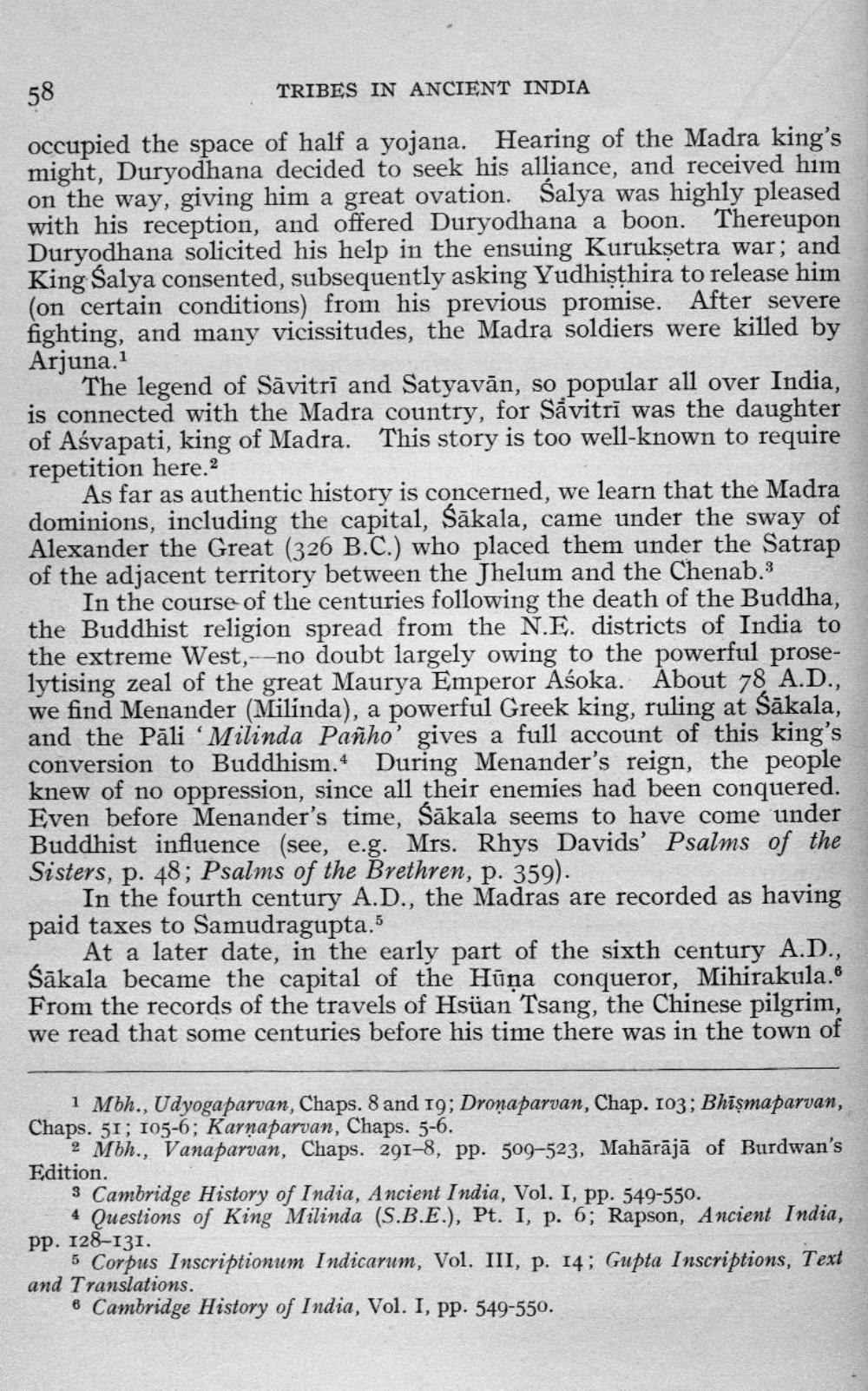________________
58
TRIBES IN ANCIENT INDIA
occupied the space of half a yojana. Hearing of the Madra king's might, Duryodhana decided to seek his alliance, and received him on the way, giving him a great ovation. Salya was highly pleased with his reception, and offered Duryodhana a boon. Thereupon Duryodhana solicited his help in the ensuing Kurukṣetra war; and King Salya consented, subsequently asking Yudhisthira to release him (on certain conditions) from his previous promise. After severe fighting, and many vicissitudes, the Madra soldiers were killed by Arjuna.1
The legend of Savitri and Satyavan, so popular all over India, is connected with the Madra country, for Savitri was the daughter of Asvapati, king of Madra. This story is too well-known to require repetition here.2
As far as authentic history is concerned, we learn that the Madra dominions, including the capital, Sakala, came under the sway of Alexander the Great (326 B.C.) who placed them under the Satrap of the adjacent territory between the Jhelum and the Chenab.3
In the course of the centuries following the death of the Buddha, the Buddhist religion spread from the N.E. districts of India to the extreme West,--no doubt largely owing to the powerful proselytising zeal of the great Maurya Emperor Aśoka. About 78 A.D., we find Menander (Milinda), a powerful Greek king, ruling at Sakala, and the Pali 'Milinda Pañho gives a full account of this king's conversion to Buddhism. During Menander's reign, the people knew of no oppression, since all their enemies had been conquered. Even before Menander's time, Sakala seems to have come under Buddhist influence (see, e.g. Mrs. Rhys Davids' Psalms of the Sisters, p. 48; Psalms of the Brethren, p. 359).
In the fourth century A.D., the Madras are recorded as having paid taxes to Samudragupta.5
At a later date, in the early part of the sixth century A.D., Sakala became the capital of the Huna conqueror, Mihirakula. From the records of the travels of Hsüan Tsang, the Chinese pilgrim, we read that some centuries before his time there was in the town of
1 Mbh., Udyogaparvan, Chaps. 8 and 19; Dronaparvan, Chap. 103; Bhismaparvan, Chaps. 51; 105-6; Karnaparvan, Chaps. 5-6.
2 Mbh., Vanaparvan, Chaps. 291-8, pp. 509-523, Mahārājā of Burdwan's Edition.
3 Cambridge History of India, Ancient India, Vol. I, pp. 549-550.
4 Questions of King Milinda (S.B.E.), Pt. I, p. 6; Rapson, Ancient India, pp. 128-131.
5 Corpus Inscriptionum Indicarum, Vol. III, p. 14; Gupta Inscriptions, Text and Translations.
6 Cambridge History of India, Vol. I, pp. 549-550.




